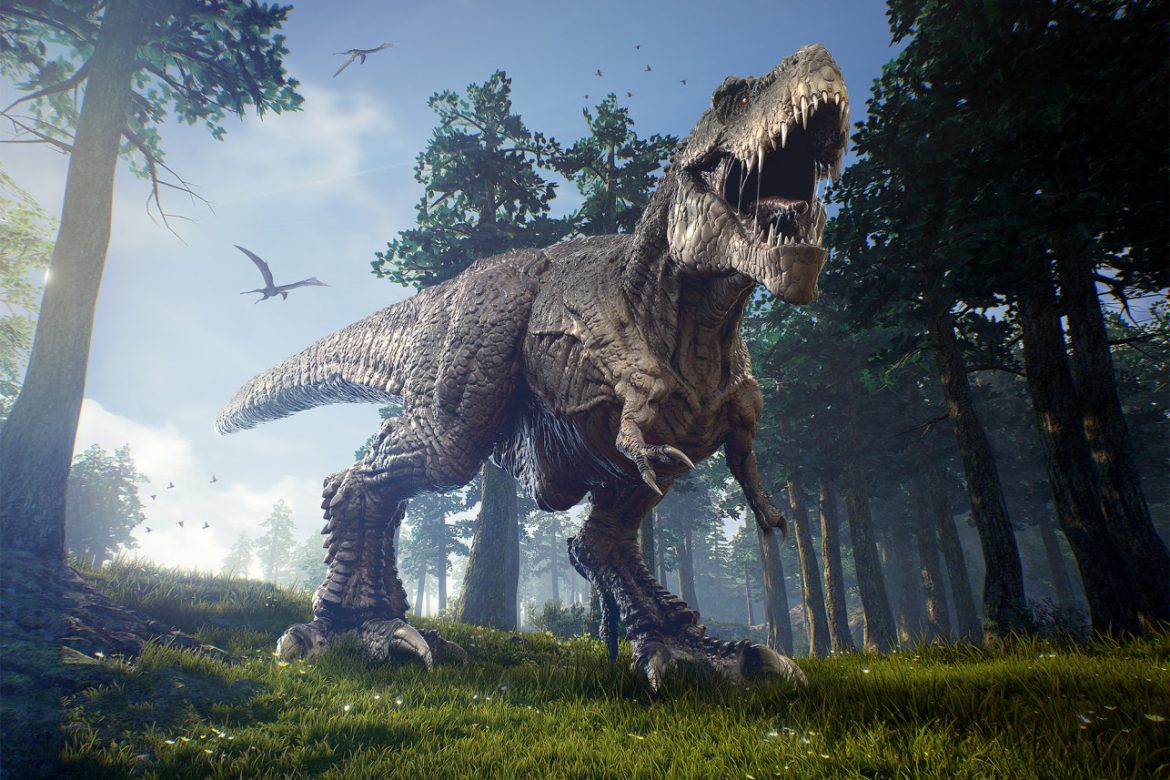Efficient killer.
The apex predator of the dinosaur world would do well in a cross country race–and deplete less energy while on the hunt–new research shows.
New, open access research published in PLOS One, examined a number of theropod (bipedal) dinosaurs, including everything from their overall mass to the circumference of their strongest leg-bone, the femur. While much of this research has been done before for Tyrannosaurus rex and related dinosaurs–creating top speed range estimates from 35km/h to 70km/h–this research focused heavily on the mass of creature in relation to its various leg measurements.
The research shows that while the T-rex likely didn’t get any speed boosts from its large size–earlier research suggested running too fast and falling over could kill the dinosaur–it did benefit from so-called “cost savings” in transport. That’s to say, the king of the dinosaurs saved energy “locating, pursing and subduing prey”, meaning it likely needed several tonnes of food less than previous estimates.
Additionally, the research supports two other beliefs about the T-rex: it was likely a pack hunter, in certain conditions anyways, and it was likely able to turn on a dime.
“When combined these two lines of evidence for an energy efficient, yet still nimble, design of the Tyrannosauridae hindlimb reflect a likely long-distance stalker with a final burst to the kill likely in a pack or family unit, similar to modern wolves.”
Top image: Herschel Hoffmeyer via Shutterstock.
